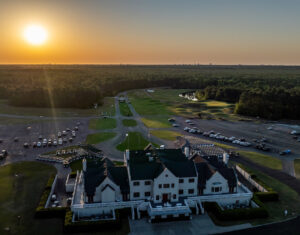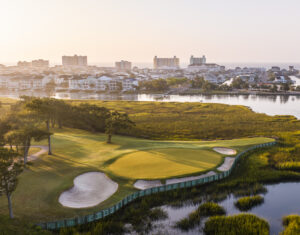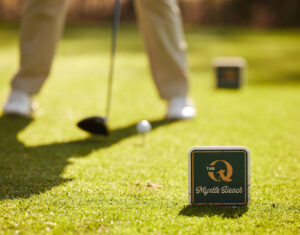Course Spotlight: Glen Dornoch is Easy on the Eyes
The course, which opened in 1996, isn’t exceedingly long, playing 6,890 yards from the tips, but it’s plenty challenging. Most players play from the blue (6,446 yards) or white tees (6,035 yards), but don’t let the “lack” of yardage lull you into playing from a set of tees your game can’t handle.
Some layouts need length as a defense; Glen Dornoch isn’t one of them. The course was one of Johnston’s first independent designs and he crafted a layout that rewards creativity and shot-making. Pulling the driver on every tee isn’t a recipe for success as wetlands and/or water come into play on the final 14 holes.
Playing from the blue tees only three of the 10 par 4s play more than 400 yards, including the final two, and that number drops to one when playing the whites (something you should do if your handicap is over 15).
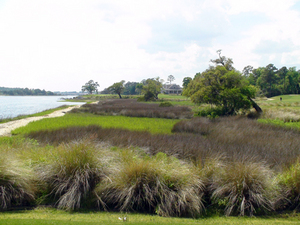 The short par 4s challenge golfers to be accurate off the tee and find the right spots in the fairway, but they don’t take the driver completely out of the bag. Glen Dornoch invites players to get off to a fast start as none of the first three holes – all par 4s – play more than 342 yards from the blue tees. For long-hitters, No. 2 and No. 3 are birdie opportunities.
The short par 4s challenge golfers to be accurate off the tee and find the right spots in the fairway, but they don’t take the driver completely out of the bag. Glen Dornoch invites players to get off to a fast start as none of the first three holes – all par 4s – play more than 342 yards from the blue tees. For long-hitters, No. 2 and No. 3 are birdie opportunities.
The inviting nature of the opening holes stands in contrast to the difficulty of 16, 17 and 18, holes almost universally regarded as among the most scenic and difficult on the Grand Strand. But that’s part of the fun. At times players wear down toward the end of the round and turn their attention toward the 19th hole, that doesn’t happen at Glen Dornoch .
“It keeps you in the round because you want to see how you do on the last three,” Jason Himmelsbach, Glen Dornoch’s marketing director said. “Even if you don’t finish exactly how you want, it’s a great test and it keeps your game focused.”
The holes along the Waterway provide the take-home memories, but Glen Dornoch is solid throughout. Here is a closer look at what the Johnston design offers:
Par 3s
The 17th is one of Glen Dornoch’s signature holes. It plays 182 yards from the blue tees and 164 from the whites. According to the scorecard, it’s the second easiest hole on the back nine, but the scorecard can’t measure the visual intimidation of the wetlands and the wind coming off the Atlantic.
The front side par 3s, No. 4 and No. 7, give players a chance to score. No. 4 is the course’s shortest hole, playing just 155 yard from the blue tees and 137 yards from the whites. The redan green is inviting and there is nothing tricky. Just play the yardage and hit a good shot. The seventh (176 yards/166 yards) is much the same. Bunkers on the left pose potential problems, but players don’t have to thread the needle to score here.
Wetlands factor in on No. 14, but if you favor the left side there is plenty of margin for error. It’s the easiest hole on the back nine, and players need to take advantage.
Par 4s
Length isn’t required to play Glen Dornoch’s par 4s well. Accuracy, on the other hand, is a must. Players that can hit the ball between 200 and 225 yards and do so accurately will have opportunities at Glen Dornoch. There is only one front nine par 4 that plays more than 400 yards and that is the knee-knocking ninth.
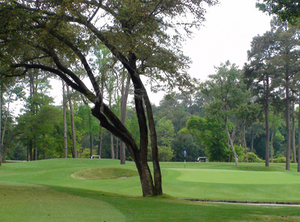 No. 9 plays 420 yards from the blues and 406 from the whites, and the Intracoastal runs along the entire right side. The hole will make players with a slice wake-up at night with cold sweats.
No. 9 plays 420 yards from the blues and 406 from the whites, and the Intracoastal runs along the entire right side. The hole will make players with a slice wake-up at night with cold sweats.
The first three holes are all short par 4s and players should take advantage.
The back nine offers opportunity, particularly on the 330-yard, 12th hole, but the closing par 4s, No. 16 and No. 18, are among the course’s most challenging. The 16th hole, which plays down hill, is one of Glen Dornoch’s best and most dramatic.
The 18th forces a difficult decision. Played conventionally, no. 18 is a dogleg left with a landing area that is difficult to hit, but Johnston gives players the opportunity to cut the corner, though it’s an all or nothing proposition. It’s approximately 161 yards to clear the wetlands from the white tees and 220 from the blues. The distance needed to clear the wetlands isn’t great but there is no room for a bailout and there is sand on both sides of the fairway.
Players that attack the hole conventionally are left with a 175-yard approach into what is often a left-to-right wind. Given the difficulty of that shot, it’s worth it to try and cut the corner.
Par 5s
Glen Dornoch’s par 5s don’t give up birdies easily. The course, taken as a whole isn’t long, but the par 5s require strength. The fifth hole plays 532+ yards from all three sets of non-senior tees and wetlands are a factor throughout. It's is a three-shot hole under all circumstances. Play your second shot to the left side of the fairway (but beware of the creek) for the best angle into a deep green.
The Intracoastal comes into sight for the first time on No. 8, a long par 5 (540 blue tees/512 white tees) that features abundant elevation changes. The fairway isn’t exceedingly wide but take a crack with the driver and the opportunity to get home in two might avail itself.
The 10th is reachable in two (508 blue/472 white) but wetlands that dissect the fairway leave a second shot of nearly 250 yards, so it’s far from given.
The most difficult hole on the backside is the par 5 13th. The dogleg left has water running along the left side and requires a demanding second shot. With water on the left, it’s easy for players to push their second shot right and into the trees. Keep it in the middle and don’t get greedy here.
The Verdict: Glen Dornoch is beautiful and challenging. The holes along the waterway provide players with the coastal golf experience they can’t get at home, and the inland holes help consolidate Glen Dornoch’s reputation as a Myrtle Beach golf favorite.
Glen Dornoch is a course you will tell your friends about long after you’ve returned home, and that’s the highest form of praise for a course you are traveling to play.
